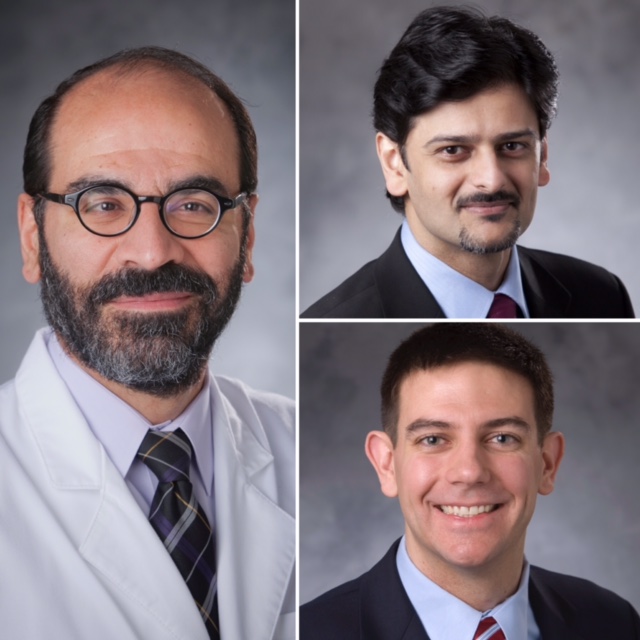In an era wherein the boundaries between technology and medicine converge, the field of medical physics emerges as a beacon of innovation, intersectionality, and profound societal relevance. Central to this evolution is Dammy Joseph’s vision for reforming the pedagogy surrounding medical physics education. One might wonder, considering the burgeoning complexities of this discipline: How can we ensure medical physics education is both accessible and inclusive, particularly in a world rife with disparities? This inquiry serves as an entrance to a labyrinthine exploration of the contemporary challenges in medical physics education.
To unpack Dammy Joseph’s vision, one must first appreciate the underlying tenets that govern the current landscape of medical physics education. Traditionally, the field has been characterized by rigorous academic prerequisites, often leaving a significant segment of potential scholars — particularly from underrepresented demographics — at a disadvantage. It poses an intriguing conflict: how does one harmonize the need for a robust foundational knowledge with the imperative for inclusivity? This nuanced friction begs critical examination, as it shapes the pedagogical frameworks that govern the training of future medical physicists.
At the heart of Joseph’s advocacy lies the principle of accessibility — a mandate that transcends mere geographical constraints to encompass socioeconomic, cultural, and cognitive dimensions. One may ponder: can educational institutions reimagine their curricula to better serve a diverse student body? It is within this fertile ground that innovative methodologies must be nurtured, integrating adaptive learning technologies and community engagements. For instance, the incorporation of online learning platforms has exploded during the pandemic, suggesting a viable avenue towards democratizing access to complex medical physics curricula.
Moreover, the traditional classroom settings often do not accommodate varied learning styles. Understanding this, Joseph proposes a mixed-methods approach that employs both quantitative and qualitative insights. Such an approach could harness the strengths of immersive simulations and hands-on laboratories, which are vital for understanding intricate concepts like radiation therapy and imaging physics. These experiential learning opportunities should not be a privilege but rather a staple offered to all students.
The challenge remains: how can educational institutions shift their paradigms? Pivotal to this transformation is an earnest commitment to stakeholder collaboration. By fostering partnerships between academic institutions, healthcare facilities, and governmental bodies, resources can be pooled to create scholarships, mentorship programs, and community-focused workshops. This integrative model could thus bolster access for aspiring medical physicists, leading to a richer, more diverse field.
In tandem with accessibility, Joseph emphasizes the significance of cultural competency within medical physics education. Now, consider a hypothetical scenario: a medical physicist from a marginalized background may face distinct challenges that necessitate a tailored educational approach. By contextualizing medical physics within a framework that respects and integrates diverse cultural perspectives, we not only enhance student engagement but also cultivate a workforce attuned to the multifaceted needs of the populations they serve.
The incorporation of interdisciplinary studies into the medical physics curriculum also warrants attention. As the complexities of healthcare systems grow, bridging knowledge between fields such as engineering, data science, and public health enriches the academic tapestry and prepares future professionals to tackle multifarious challenges. How do we create coursework that fluidly intertwines these disciplines while maintaining academic rigor? Joseph advocates for curricular revisions towards a problem-based learning model, where students confront real-world scenarios in a collaborative environment, mirroring the dynamics of contemporary healthcare settings.
Technology’s role in reshaping medical physics education cannot be overstated. The advent of artificial intelligence and machine learning offers unprecedented opportunities for research and practical applications. The question then arises: are academic institutions equipped to harness these tools effectively? Educators themselves must be at the forefront of this integration, continually updating their skill set to remain relevant. Lifelong learning should be encouraged, fostering an academic ecosystem that thrives on continuous improvement and adaptation.
Furthermore, the intersection of ethics and medical physics education presents a compelling domain for discussion. As medical technologies advance, ethical dilemmas become increasingly prominent. Joseph posits an essential consideration: should ethical training be a core component of the medical physics curriculum? By instilling a robust ethical framework, students are better prepared to navigate the intricate challenges present in clinical environments, ensuring that their practices align with the overarching goal of patient welfare.
Finally, spanning Joseph’s vision is the overarching aim of transforming the perception of medical physics within society. Public understanding of this vital field is limited, often relegating medical physicists to the background of healthcare discussions. This visibility issue poses a considerable challenge. To address it, outreach initiatives must be developed that highlight the crucial contributions of medical physicists. By encouraging high school students and undergraduates to engage with medical physics through workshops, mentorships, and public demonstrations, the field can cultivate the next generation of pioneers enthusiastic about this multifaceted discipline.
In conclusion, Dammy Joseph’s vision for accessible medical physics education encapsulates a profound remodeling of existing frameworks, emphasizing inclusivity, interdisciplinary integration, and ethical integrity. The path forward, however, is fraught with challenges that necessitate collaboration, innovation, and an unwavering commitment to equity. Ultimately, the pursuit of knowledge in medical physics should not solely be confined to the select few; it should resonate with and empower all aspiring physicists. Only then can the field truly reflect the diversity and complexity of the society it intends to serve and heal.












